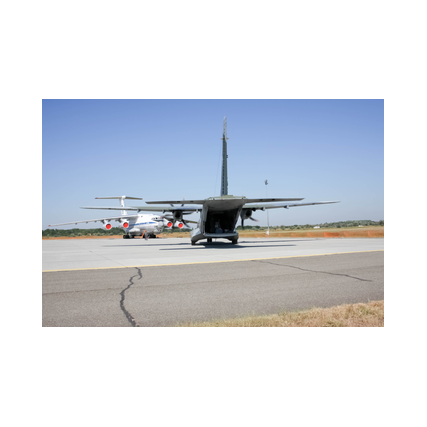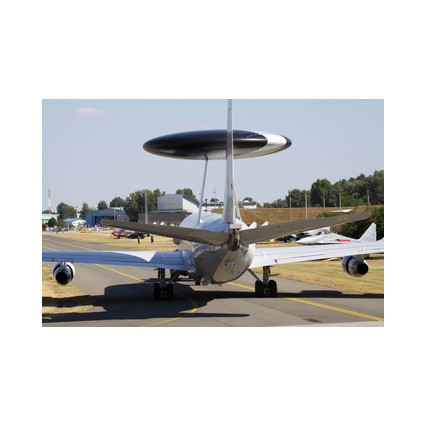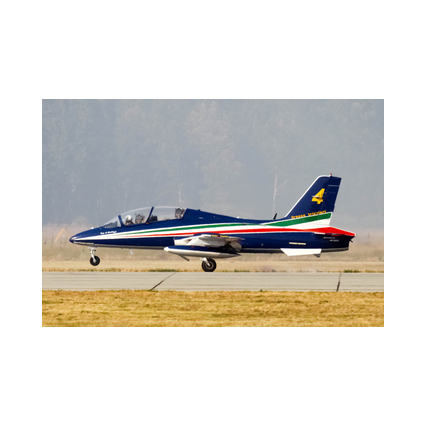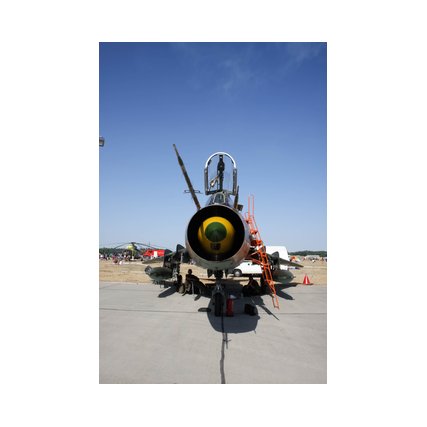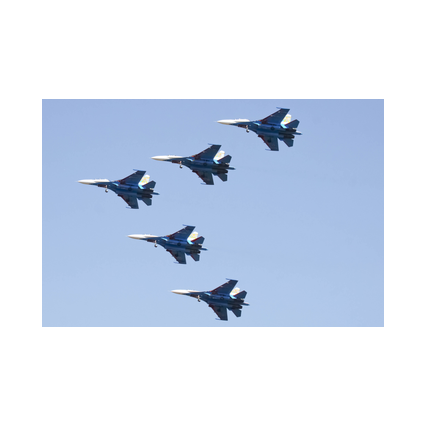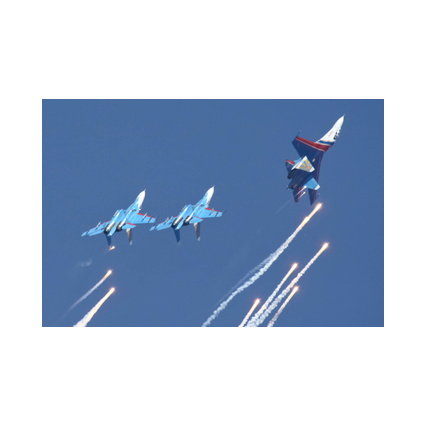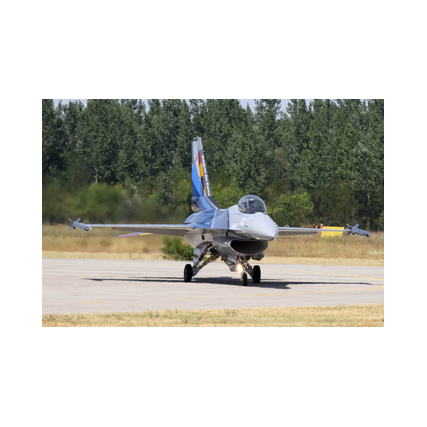AUGUST 2013 REPULONAP KECSKEMET AIR SHOW 

PHOTO BY DIEGO CROTTI
Copyright (C) Diego Crotti
Our grandiose event is a unique show in Hungary and Central Europe. The Kecskemét Air Force Day is more than an air show, since not only the sky, but the ground location, the Airbase is also packed with things to see. The expected over 100,000 guests will be entertained by military shows, family and children’s programmes and gastronomic adventures.The organizer of the event, the Ministry of Defence, welcomes you and your family with diverse programmes and unparalleled spectacle on this celebration of technology, beauty and power.According to plans, the air show will last nearly 7 hours on both days of the event. Besides solo performances many formations of military, civilian and old-timer aircrafts will be featured in the air and on the ground. The programme is still under development, but we are happy to report that the aerobatic team of the Russian Air Force, the Russkiye Vityazi (Russian Knights) has accepted our invitation. We expect many other teams of similar international renown to be there on the Kecskemét Air Force Day. Ground military technology shall be represented by the combat, transport and military vehicles in service in the Hungarian Defence Forces and antique military vehicles.Besides the aeroplanes and helicopters seen in the air, aircrafts exhibited on the ground should also prove very interesting. More information will be available on the details of the static display on our constantly updated website as the event draws closer.
The Nation’s Ace
Dezső Szentgyörgyi was born inKőkúttapasztó in 1915. He was barely 18 when he volunteered at the Royal Hungarian Defence Force, after which he graduated from the two-year pilot school at Székesfehérvár with excellent results.His commanders soon noticed him in his first engineering post, and due to his intelligence, ability and strong character,they found him suitable to be trained as a fighter pilot. He finished that school in 1938 with an excellent certificate.He took part in World War II as a trained fighter pilot in the Transcarpatian operations. Back then, he served in the 1/2 fighter squadron. In May 1942, he got to the eastern front as a member of the legendary Szolnok 1/1 "Darázs" (“Wasp”) squadron. He flew Héjaand Messerschmitt - 109aircraft. He spent almost 18 months in operational areas where he became the most successful fighter pilot after participating in 141 missions, and winning 7 air victories.On 1 May 1944, the 101st “Puma” Fighter Wing of the Royal Hungarian Air Force was established in order to defend the home airspace. His career continued successfully among the legendary Pumas too in the 101/2 Retek (Raddish) squadron. By the end of the war, Dezső Szentgyörgyi could boast of over 300 missions and 29 verified air victories.A year later, he was employed at MASZOVLET (Hungarian-Soviet Airlines) as a pilot for passenger planes. He flew until 1950 on Li-2 type aircraft. The political turmoil of the 1950s had its impact on him too. He was arrested and charged with disloyalty and sent to prison. He was freed in August 1956. Due to his spirit, diligence and endurance, he got back into MALÉV Hungarian Airlines. As a captain of the IL-14 and IL-18 type aircraft he was among the best pilots.On 28 August 1971, his plane crashed into the sea during a landing manoeuvre near Copenhagen’s Kastrup Airport, because of a then unknown meteorological phenomenon, a microbust. The legendary pilot had three weeks until retirement. He was the type of man after whose death what counted was not that he lived to the age of 55, but that he had flown 5 million kilometres. His life, his work and his noble character are well reflected in the following sentence:“He presented his true humanity as an example to those in whose heart noble ethics are the greatest value.”
The History of Kecskemét Airbase
The role of Kecskemét in Hungarian military history has always been of special importance. Infantry and hussar (light cavalry) units and artillerymen used to be stationed in the city and its surroundings. The thought of establishing an airfield first came up in 1932 on the air show that created a tradition. Member of the Order of Vitéz, Dr. György Rákosi Staff Colonel, head of the Aeronautic Authority announced the plan to establish a military airfield in Kecskemét. Three years later, on 4 March 1935, the construction of the airfield started on the area next to Nyomási-puszta which was opened in 1937. The military airfield soon became populated. After another three years, 3 hangars were also opened.On 26 June 1941, Hungary entered World War II. As of 1941, German long-distance reconnaissance air squadrons were stationed at the Kecskemét Airfield, and as the frontline came closer, German fighter and transport units were deployed to the airfield, staying until mid-October 1944. The Allied air forces launched numerous attacks on the Kecskemét Military Airfield in the summer of 1944. The attack of the US Air Force caused such serious damages that the Soviet troops advancing a few months later could only occupy a largely ruined airfield in miserable condition. A large part of the airfield fell victim to hostile action and air raids. The end of World War II closed a significant era in the life and military activity of Kecskemét Airfield.By the end of the war, the Hungarian Air Force was completely wiped out, annihilated. As of 1948, the damages gradually started to get repaired and the rebuilding of the airfield commenced. In the autumn of 1949, flying training was re-established in the city. In 1950, they started the extension of the 1,500-metre-long taxi tracks and airstrip built by the Germans. The damaged old concrete runway was broken up and a new runway was constructed. The investment and modernisations were completed within a year.
A Short History of the Wing and the Base
The complete personnel and military technology of the 25th Fighter Division Command and the 24th Fighter Wing stationed at Szentkirályszabadja was deployed to Kecskemét between 25 and 30 September 1951 and then redeployed to Taszár between 1 and 3 November 1952. Parallel to the dislocation, the 66th Fighter Division Command and the 62nd Fighter Wing were transferred to Kecskemét from Kunmadaras.In 1951, the regiment that became the official predecessor of Kecskemét Air Base was established as a subordinate unit of the 66th Fighter Division at Kunmadaras. The deployment number of the Kunmadaras Fighter Regiment became 62nd. The regiment was initially established with 3 fighter squadrons equipped with Yak-9 “Kestrel”, Yak-11 “Buzzard”, Yak-18 “Quail” and Zlin-381 “Swallow” aircraft types.In that time, MíG-15 jet fighters were very modern, and theoretical retraining for this new type started on 1 July 1951 headed by Soviet pilots and engineers. The retraining lasted only 12 days. On 1 August, practical training started. The commander of the unit, Lieutenant-Colonel István Mezőfi was actually the first among Hungarian pilots to fly the new aircraft in Hungarian airspace on 15 August 1951. The regiment achieved mission readiness by the end of October. In December, the number of aircrafts also increased: the unit received 20 MiG-15 “Eagle” fighters and 5 MiG-15 UTI dual control training aircrafts.Alongside the modernisation of the armed forces, MiG-15 BIS-type aircrafts arrived at Kunmadaras in October 1952. The 62nd Fighter Regiment had 28 such aircrafts in service.
The Command of the 66th Fighter Divisionand the62nd Fighter Regiment were transferredto Kecskemét on 1 November 1952. The most important task of the regiment dislocated to the city was the high level performance of intense flying training and combat readiness and other on-duty readiness tasks.On 1 July 1954, the complete personnel and air technology of the 62nd Fighter Regiment was transferred from Kecskemét to Kalocsa. This became necessary, because due to the heavy use, the concrete surface of the airbase runway was heavily worn. The re-deployment lasted 17 days. The forced transfer was repeated in 1965, 1975, 1981, and 1983.In February 1955,designated personnel performed retraining at Savastleika Air Base to MiG-17 F and MiG-17 PF types. On 8 March 1955, Captain Miklós Vázsony flew a MiG-17 PF for the first time in the history of the Hungarian Air Force. On 23 April 1955, 6 MiG-17 PF type aircrafts and on 20 June 1956, 20 MiG-17 F type aircrafts arrived at Kecskemét.In February 1957, the air divisions and subordinate regiments were dissolved. On 15 April 1957, the Flying Training Centre Command was established in Kecskemét. Its subordinated units, the 1st and 2nd Flying Training Squadrons were stationed at Taszár and the 3rd Flying Training Squadron and miscellaneous flying subunits at Kecskemét. Flight personnel only got back its previous combat readiness and training level after the reorganisations, by the end of 1957. On 1 November 1958, the 59th Fighter Regiment was organisedwhose first commander was Major Sándor Benke. Between 15 June and 1 August 1961, The Kecskemét Flying Training Centre Command was eliminated, while in Szolnok, the reestablishment of the Kilián György Flying Officers’ School took place. The 2nd Home Air Defence Division Command was established on 1 October 1962 at Miskolc, with the Keckemét 59th Home Fighter Regiment being subordinated to it.1962 brought about great changes in the life of the regiment. The modernisation and rearming of air troops meant that the 1st and 2nd Fighter Squadrons of the regiment received MiG-21 F-13 aircrafts simultaneously – altogether 28 of them – which were capable of supersonic flight. Those selected to learn the use of this modern military technology received training in Pápa and Taszár.
In 1965 and 1966, the regiment received 4 MiG-21 U type dual control training aircrafts, and a few years later more arrived at the unit.Between 20 May and 20 September 1965, the regiment was transferred to Mezőkövesd, due to repairs to the runway.On 1 July 1966, the 4th Reconnaissance Air Squadron was established and joined to the 4th Air Engineer Squadron established in 1962, but only belonged to the military order of the regiment in peacetime. Its basic task was operational and operational-tactical aerial reconnaissance in theatres of operation. It included 12 MiG-15 BIS and 2 MiG-15 UTI type aircrafts.In 1970, the 4th Fighter and 4th maintenance squadrons were dissolved. In the same year, the 1st Fighter Squadron performed the first live rocket practice in Poland. In the next decades it took turns in successfully participating in live missile practices at Polish and Soviet practice ranges.On 31 March 1974, MiG-17 interceptors were phased out from the arsenal of the regiment.On 20 April 1975, the unit was again transferred to Mezőkövesd, due to repairs of the runway. The dislocation lasted until 15 October.In 1975,all three fighter squadrons of the regiment were equipped with MiG-21 F-13 type aircrafts, and at the same time, the 1st Fighter Squadron was reequipped with 14 MiG-21 MF aircrafts, which were removed from the Taszár regiment. In 1977, the MiG-21 F-13 technology was phased out from the 2nd Fighter Squadron too and replaced with the 14 MiG-21 MF and 2 MiG-21 UM type aircraft taken over from the Pápa regiment. In 1978, the 3rd Fighter Squadron was also reequipped; 10 MiG-21 MF and 1 MiG-21 UM type aircrafts were introduced. In 1979, Pápa handed over a further 11 MiG-21 MFs to Kecskemét.In 1980, the division of aircraft was the following: 42 MiG-21 MFs, 8 MiG-21 UMs and 8 MiG-21 Us.The winter of 1980/81 was very cold and the concrete surface got damaged again. Another transfer took place to Mezőkövesd in early May 1981, which lasted until 4 August. The runway was unable to withstand the heavy use, and a total replacement of the concrete was required. The squadrons were transferred to Szolnok and Mezőkövesd (Klementína) in early January 1983. The dislocation lasted for 11 months.
On 30 June 1984, the Miskolc Home Air Defence Division Command was dissolved. The 59th Home Fighter Regiment was replaced under the subordination of the Veszprém 1st Home Air Defence Corps Command, which was made into the Air Defence Command of the Hungarian Defence Forces on 1 November 1991.Meanwhile, the planned economy system collapsed in Hungary, and the shadow of indebtedness spread over everything. The consequences had a grave impact on Kecskemét personnel. In 1990, immediately after the political change, the 3rd Fighter and 3rd Maintenance Squadrons were dissolved. The regiment was downsized to a wing. Therefore, the number of combat and maintenance subunits of the regiment was decreased to two fighter squadrons, but flight personnel numbers also diminished significantly. Also in 1990, upon the command of the Minister of Defence, the regiments of the army assumed names of historical tradition. Democracy was developing, so in Kecskemét it was up to the personnel assembly to select a name. Many names occurred as official recommendations. The majority supported the name of Air Force Captain Vitéz Dezső Szentgyörgyi, and those in charge also approved of it. The former comrades and the family of the renowned pilot were present when the wing assumed the name “Szentgyörgyi Dezső” on 28 April 1990.
An International Air Show was organised on 18-19 August 1990 in Kecskemét.A year later, the unit was classified as a regiment, and it became known as the 59th Szentgyörgyi Dezső Tactical Air Regiment of the Hungarian Defence Forces. The 1st Flight Squadron assumed the name of “Puma” that had war traditions, and the 2nd Squadron selected another historical name – “Dongó” (“Bumblebee”).
The organisation of the L-39 Albatros training flying squadron started in late 1993. At the same time, in relation to the partial settlement of the Soviet state debt, an opportunity arose to modernise military technology. The designated group spent four months in the Russian Federation where they studied the skills necessary for the MiG-29 type aircraft. After the training, the MiG-29s arrived in Kecskemét according to the following schedule: 6 fighters and two training aircraft on 15 October 1993, 8 fighters on 26 October and 8 fighters and 4 training aircraft on 11 November.
After that, on 31 August 1994, theMiG-21s were taken out of service and replaced by the MiG-29s. On 1 September 1994, the 2nd Tactical Air Squadron was placed under combat ready duty. On 1 September 1995, the 1st Tactical Air Squadron was also ceremonially placed in standby in the presence of the Minister of Defence.The Air Defence Command of the Hungarian Defence Forces was dissolved on 15 December 1995 and the 2nd Airborne and Air Defence Corps Command was established in Veszprém and the regiment was placed in its subordination.In 1996, the 3rd Training and Reconnaissance Air Squadron was put in service equipped with L-39 Albatros type aircraft. The designated forces and equipment of the regiment executed their first live rocket practice with the MiG-29, at the state range of the Republic of Poland the very same year.The Air Force Day was organised again in Kecskemét between 24 and 25 May 1997.On 1 September 1997, as part of the reform of the armed forces, the command system of the Hungarian Defence Forces was transformed and the new Air Force Staff was established.On 25-26 July 1998, Captain Gyula Vári won the prize in the Overall category at the Royal International Air Tattoo-n (RIAT) held in Fairford, UK as one of the 170 pilots from 46 countries, thus accounting for a fantastic Hungarian success.On 21 August, the base hosted a NATO Express event, the purpose of which was to propagate Hungary’s NATO accession. Following that, between 22 and 23 August, the regiment organised the Anniversarial Air Force Day, which was an event of special importance, since it was that year that the Hungarian Defence Forces celebrated its 150th and Hungarian Military Flying its 60th anniversary. On 12 March 1999, Hungary became a member of the North Atlantic Alliance, which meant and still means new
tasks and challenges for the regiment. The same year, the new, modern flight building was handed over and Major Vári once again won prizes in the Overall category and for Jet-Solo in Fairford.The Royal International Air Tatoo-2000 Air Show was held on 22-23 July 2000 at the Cottesmore Air Base in the UK. The jury gave the prize for the Overall category to a Hungarian pilot once again; Captain Péter Kovács became world champion.Due to organisational changes that meant the expansion of our scopes of activity, on 1 October, the 59th Szentgyörgyi Dezső Air Base of the Hungarian Defence Forces was established.On 20-21 May 2000, the Millennium Air Show and Military Display was held to celebrate the millennial anniversary of the establishment of the Hungarian State. In the summer of that year, Major Vári once again returned home victorious from the Cottesmore Air Show. The prize for the Overall category came into the possession of a Hungarian fighter pilot for the fourth time.As of 1 December 2001, the organisational structure of the Air Force of the Hungarian Defence Forces changed; the Air Force Staff became the Air Force Command.On 21 December 2001, the Hungarian Government signed the contract on leasing 14 Gripen fighters, according to which the country would provide for the defence of its airspace with 12 single-seat and 2 double-seat fighters. In July 2003, Captain Zoltán “Topi” Szabó won the trophy once again in Fairford that was handed over to the best. Kecskemét Military Airport held another International Air Show and Military Display between 15 and 16 August.
On 3 November 2004, conscription was abolished.Since its establishment, 35,000 conscripts had served at the base. As of 1 December 2004, after the organisational transformations, the fixed wing aircraft subunits from Szolnok were transferred to the base. That was when the base took over the transportation and training air squad. The AN-26 transport air squad got transferred to Kecskemét in December 2005. The Yak-52 training air squad was returned to the Szolnok Helicopter Base on 1 January 2007.On 6-7 August 2005, the base once again held the International Air Show and Military Display.On 21 March 2006, the first five Jas-39 Gripen fighters arrived at Kecskemét Air Base and by December 2007, all 14 JAS-39 EBS-HU Gripen fighters were in active service.On 1 January 2007, the Joint Force Command of the Hungarian Defence Forces was established.The International Air Show and Military Display was organised again between 11 and 12 August 2007 and 16 and 17 August 2008 in Kecskemét. It was in the latter year that the Hungarian Defence Forces celebrated its 160th and Hungarian Military Flying its 70th anniversary. On 15 December 2008, the Jas-39 Gripens were put in combat ready service.In 2009, the L-39 Albatros training aircraft were taken out of service.On 7-8 August 2010, the airbase hosted another International Air Show and Military Display.In December 2010, the MiG-29 fighters were taken out of service.
Between 1 October 2010 and 31 March 2011, Hungary fulfilled the role of “Lead Nation” at the Kabul Airport within a NATO mission, during which Brigadier-General Nándor Kilián served as Kabul Airport Commander and Lieutenant-Colonel Barna Jenei as deputy commander. In recognition of their outstanding performance during that international peace keeping mission, on occasion of the termination of their foreign service, the Chief of Staff of the Hungarian Defence Forces presented Brigadier-General Nándor Kilián and Lieutenant-Colonel Barna Jenei with the “Memorial Coin for Outstanding Performance”.Between 16 and 23 March 2012, the Hungarian Air Force successfully fulfilled the live practice codenamed “Air Superiority 2012” at the Vidsel range in Sweden. The designated personnel participated in the exercise with seven Jas-39 Gripens and received the evaluation of “good” or “excellent”.On 6 July in the same year, the Hungarian AN-26 was selected as the most beautiful aircraft of the “Royal International Air Tattoo 2012” in Fairford, UK in the Overall category.On 8 November 2012, it occurred for the first time in the history of the Hungarian Gripen programme that all the fighters (Jas-39 Gripens) in active service at the Hungarian Air Force ascended together during a complex flight task.
Copyright (C) Diego Crotti
















